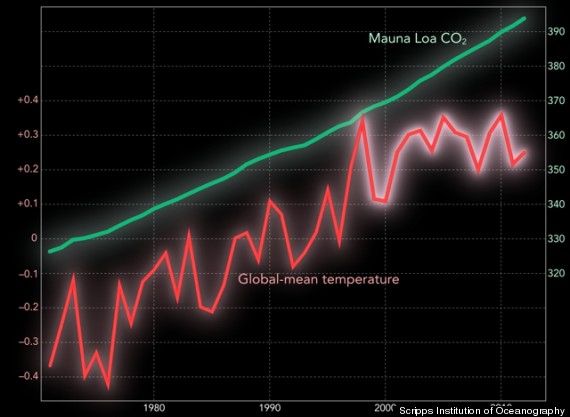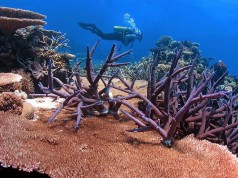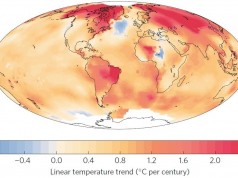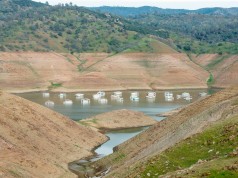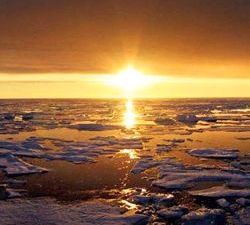 New research by Scripps Institution of Oceanography, UC San Diego climate scientists attributes the attenuation of a worldwide temperature increase to a cooling of eastern Pacific Ocean waters, one that counteracts the warming effect of greenhouse gases.
New research by Scripps Institution of Oceanography, UC San Diego climate scientists attributes the attenuation of a worldwide temperature increase to a cooling of eastern Pacific Ocean waters, one that counteracts the warming effect of greenhouse gases.
When the climate cycle that governs that ocean cooling reverses and begins warming again, the researchers predict that the planet-wide march toward higher temperatures will resume with vigor. The study does not consider when the reversal might happen, but it brings scientists closer to understanding how to look for signs of it.
If researchers can estimate that climate cycle, they could also better estimate the end date of regional trends that are linked to ocean cooling, such as the drought in the southern United States that has caused an estimated agricultural damage of tens of billions of dollars since 2000.
Prior to 2000, global temperatures had risen at a rate of 0.13ºC per decade since 1950. The hiatus has transpired while levels of carbon dioxide, the main greenhouse gas produced by human activities, continued a steady rise, reaching 400 parts per million for the first time in human history in May 2013.
The disconnect led some climate watchers to speculate that increases in the concentration of carbon dioxide are not as strongly coupled to global warming even though the heat-trapping properties of carbon dioxide have been identified for more than a century.
Scripps climate scientists Yu Kosaka and Shang-Ping Xie conclude, however, that natural variability in the form of eastern Pacific Ocean cooling is behind the hiatus. They arrived at the conclusion by using innovative computer modeling methods to simulate regional patterns of climate anomalies. This enabled them to see global warming in greater spatial detail, revealing where it has been most intense and where there has been no warming or even cooling.
“Climate models consider anthropogenic forcings like greenhouse gases and tiny atmospheric particles known as aerosols, but they cannot study a specific climate event like the current hiatus,” said Kosaka. “We devised a new method for climate models to take equatorial Pacific Ocean temperatures as an additional input. Then amazingly our model can simulate the hiatus well.”
“Specifically, the model reproduced the seasonal variation of the hiatus, including a slight cooling trend in global temperature during northern winter season,” added Xie, the first Roger Revelle Chair in Environmental Science at Scripps. “In summer, the equatorial Pacific’s grip on the Northern Hemisphere loosens, and the increased greenhouse gases continue to warm temperatures, causing record heat waves and unprecedented Arctic sea ice retreat.”
The study, “Recent Global Warming Hiatus Tied to Equatorial Pacific Surface Cooling”, appeared online in the journal Nature on August 28. The National Science Foundation (NSF), the National Basic Research Program of China, and the NOAA Climate Program Office supported the research.
“As carbon dioxide levels in Earth’s atmosphere increase, global temperatures have been rising,” said Anjuli Bamzai, Program Director in the National Science Foundation (NSF)’s Division of Atmospheric and Geospace Sciences. “But there’s been a ‘hiatus’ in the warming trend over the past decade or so, which scientists haven’t been able to explain. These researchers have found an answer: prolonged cooling of tropical Pacific Ocean waters.”
“These compelling new results provide a powerful illustration of how the remote eastern tropical Pacific guides the behavior of the global ocean-atmosphere system, in this case exhibiting a discernible influence on the recent hiatus in global warming,” said Dan Barrie, Program Manager at the NOAA Climate Program Office.

